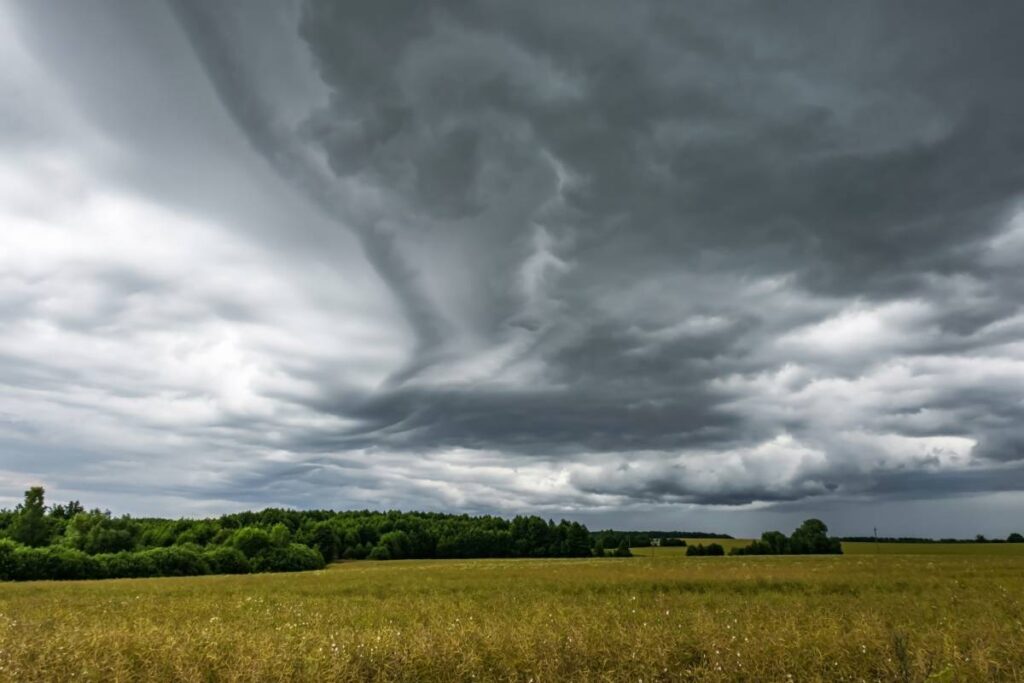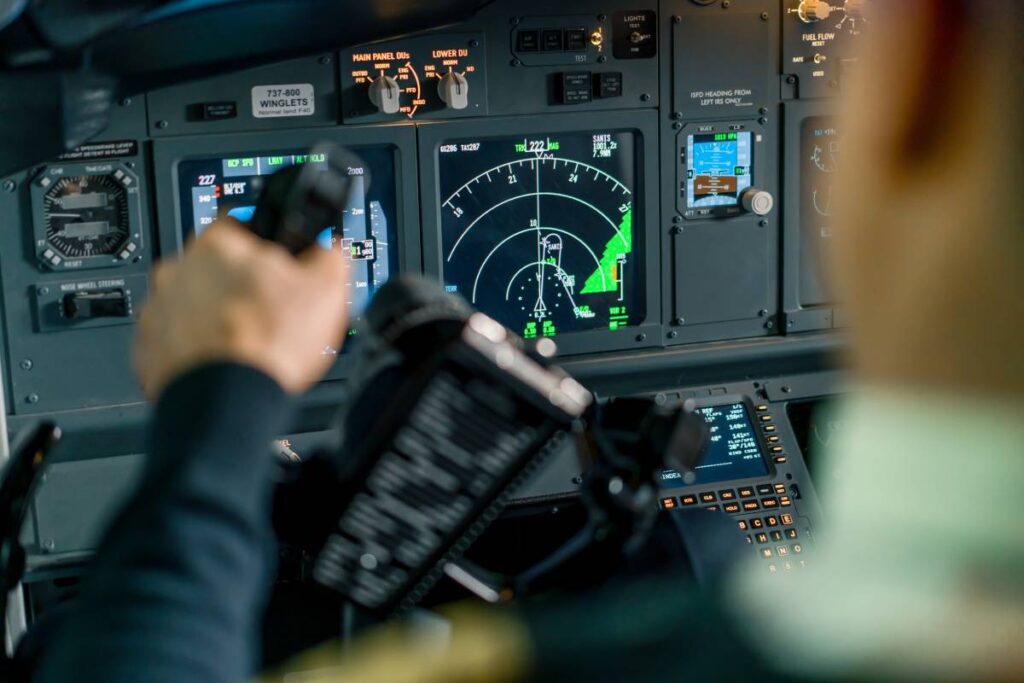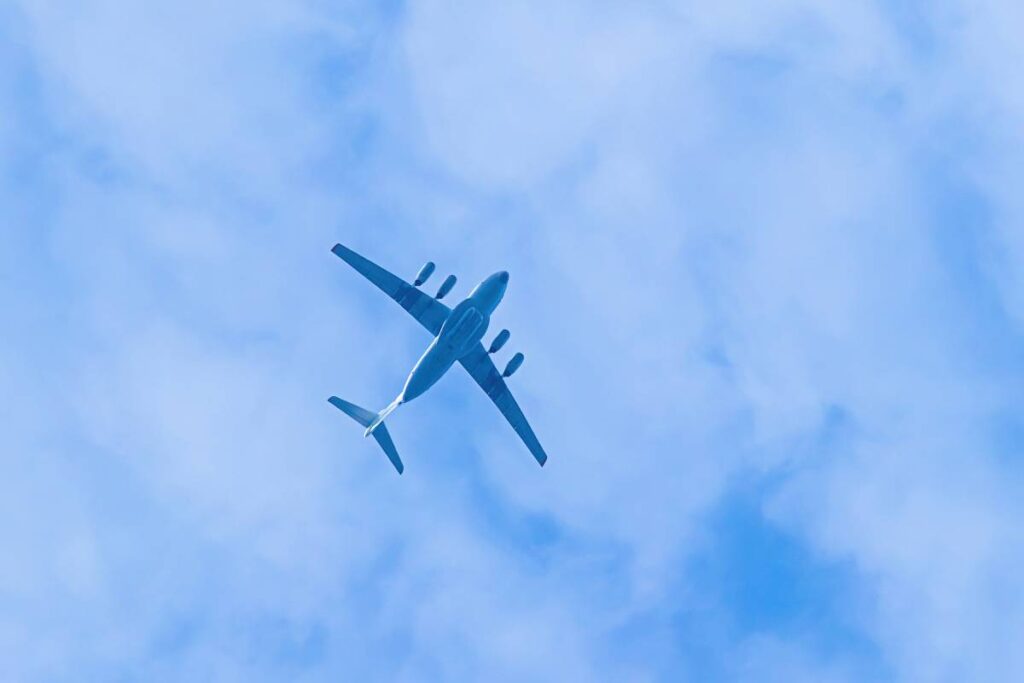Turbulence refers to irregular or chaotic fluid motion characterized by small, rapid, and seemingly random changes in air or water velocity. It is commonly experienced in both atmospheric conditions and fluid dynamics, and it is particularly well-known in aviation.
You might also read:
Key Characteristics of Turbulence
- Irregular Flow: Unlike smooth or laminar flow, turbulence involves unpredictable and erratic changes in speed and direction.
- Eddies and Swirls: Turbulent flow is often composed of vortices and swirling eddies of various sizes.
- Energy Dissipation: Energy is transferred from larger scales of motion to smaller ones until it is dissipated as heat.
Causes of Turbulence
- Atmospheric Conditions: Changes in temperature, pressure, and wind patterns can create turbulent airflows. For example, air turbulence in the atmosphere is often caused by jet streams, storm fronts, and mountain waves.
- Obstacles: The presence of objects in the flow path, such as buildings, mountains, or even the wings of an aircraft, can disrupt smooth flow and create turbulence.
- Thermal Effects: Heat from the earth’s surface can cause rising air currents, leading to turbulence, particularly during hot weather.
- Fluid Interactions: When different layers of fluid move at varying speeds or directions, shear forces can generate turbulence.

Types of Turbulence in Aviation
- Clear Air Turbulence (CAT): Occurs at high altitudes, often in the vicinity of the jet stream and away from any visible weather phenomenon.
- Thermal Turbulence: Caused by the convective movement of air due to surface heating.
- Mechanical Turbulence: Resulting from the interaction of air with terrain features or man-made structures.
- Wake Turbulence: Created by the passage of another aircraft, particularly behind heavy jets.
Impact and Management
- Aviation Safety: While turbulence can be uncomfortable and occasionally hazardous, modern aircraft are designed to withstand its effects, and pilots are trained to navigate through or avoid turbulent areas when possible.
- Engineering: In engineering applications, understanding turbulence is essential for designing efficient systems in aerodynamics, hydrodynamics, and various industrial processes.
Scientific Study
- Mathematics and Physics: Turbulence is a major area of study in fluid dynamics, involving complex equations like the Navier-Stokes equations. Despite extensive research, fully understanding and predicting turbulence remains one of the unsolved problems in physics.
Understanding and managing turbulence is crucial for safe aviation, efficient engineering designs, and comprehending natural fluid behaviours.
Can Turbulence Bring a Plane Down?
Turbulence, while often a cause of discomfort for passengers, is extremely unlikely to cause a plane to crash. Modern aircraft are designed to withstand severe turbulence, and pilots are trained to handle it effectively. Here are some key points regarding the impact of turbulence on aviation safety:
Aircraft Design and Turbulence
- Structural Integrity: Airplanes are built to endure significant stress and turbulence far beyond what is typically encountered during a flight. The design includes rigorous testing to ensure they can handle extreme conditions.
- Advanced Technology: Modern aircraft are equipped with technology to detect and avoid severe turbulence, including weather radar and real-time data from other aircraft.
Pilot Training and Procedures
- Pilot Training: Pilots receive extensive training on how to manage turbulence. They are taught techniques to minimize its impact, such as adjusting altitude or speed.
- Communication: Pilots and air traffic controllers work together to avoid areas of known turbulence. Flight paths are often adjusted based on weather reports and turbulence forecasts.
Types of Turbulence
- Clear Air Turbulence (CAT): Difficult to detect with the naked eye or radar, but modern forecasting methods help predict and avoid these areas.
- Mechanical and Thermal Turbulence: Often occurs at lower altitudes near mountains or during hot weather, but pilots are aware of these conditions and navigate accordingly.
Potential Effects of Turbulence
- Injury Risks: The primary risk from turbulence is not to the aircraft itself but to the passengers and crew inside. Injuries can occur if people are not seated with seat belts fastened. Therefore, passengers are advised to keep their seat belts fastened when seated.
- Discomfort: Turbulence can cause discomfort and anxiety for passengers, but it is rarely a danger to the plane’s structural integrity.

What do pilots do in severe turbulence?
In severe turbulence, pilots follow specific procedures to ensure the safety and comfort of passengers and the stability of the aircraft. Here are the steps and actions pilots typically take during severe turbulence:
1. Communicate with Passengers and Crew
- Informing Cabin Crew: Pilots will inform the cabin crew about the expected turbulence so they can secure the cabin and themselves.
- Passenger Announcements: Pilots will make announcements to passengers, advising them to return to their seats and fasten their seat belts.
2. Adjusting Flight Path and Speed
- Flight Path Adjustments: Pilots may request a change in altitude or route from air traffic control (ATC) to find smoother air. Severe turbulence can sometimes be mitigated by climbing or descending a few thousand feet.
- Reducing Speed: Pilots may reduce the aircraft’s speed to the recommended turbulence penetration speed, known as “manoeuvring speed” or “turbulence penetration speed,” to minimize stress on the aircraft structure.
3. Use of Autopilot
- Engaging Autopilot: In many cases, the autopilot is left on to manage the aircraft more smoothly than manual control. Modern autopilot systems are designed to handle turbulent conditions effectively.
4. Monitoring Instruments and Systems
- Constant Monitoring: Pilots closely monitor the aircraft’s instruments and systems to ensure everything is functioning correctly and to detect any anomalies early.
5. Communication with Air Traffic Control
- Reporting Conditions: Pilots communicate with ATC to report the severity and location of the turbulence. This information helps other aircraft in the vicinity to avoid the turbulent area.
- Requesting Assistance: Pilots can request assistance from ATC for alternative routing or altitude changes based on the turbulence reports from other aircraft and weather data.
6. Securing the Aircraft
- Seat Belt Sign: The seat belt sign is turned on to ensure passengers are seated with their seat belts fastened.
- Securing Loose Items: The cabin crew ensures that all loose items are secured to prevent injury or damage.
7. Maintaining Control
- Manual Flying if Necessary: If the autopilot cannot adequately handle the turbulence, pilots may switch to manual control to better respond to the aircraft’s movements.
- Smooth Control Inputs: Pilots use smooth and gentle control inputs to manage the aircraft’s response to turbulence, avoiding any abrupt movements that could exacerbate the situation.
In severe turbulence, pilots focus on maintaining control of the aircraft, ensuring the safety and comfort of passengers, and communicating effectively with both the cabin crew and air traffic control. By adjusting the flight path and speed, monitoring instruments, and following established procedures, pilots manage turbulence to keep the flight as safe as possible.
In severe turbulence, pilots follow specific procedures to ensure the safety and comfort of passengers and the stability of the aircraft. Here are the steps and actions pilots typically take during severe turbulence:
1. Communicate with Passengers and Crew
- Informing Cabin Crew: Pilots will inform the cabin crew about the expected turbulence so they can secure the cabin and themselves.
- Passenger Announcements: Pilots will make announcements to passengers, advising them to return to their seats and fasten their seat belts.
2. Adjusting Flight Path and Speed
- Flight Path Adjustments: Pilots may request a change in altitude or route from air traffic control (ATC) to find smoother air. Severe turbulence can sometimes be mitigated by climbing or descending a few thousand feet.
- Reducing Speed: Pilots may reduce the aircraft’s speed to the recommended turbulence penetration speed, known as “manoeuvring speed” or “turbulence penetration speed,” to minimize stress on the aircraft structure.
3. Use of Autopilot
- Engaging Autopilot: In many cases, the autopilot is left on to manage the aircraft more smoothly than manual control. Modern autopilot systems are designed to handle turbulent conditions effectively.
4. Monitoring Instruments and Systems
- Constant Monitoring: Pilots closely monitor the aircraft’s instruments and systems to ensure everything is functioning correctly and to detect any anomalies early.
5. Communication with Air Traffic Control
- Reporting Conditions: Pilots communicate with ATC to report the severity and location of the turbulence. This information helps other aircraft in the vicinity to avoid the turbulent area.
- Requesting Assistance: Pilots can request assistance from ATC for alternative routing or altitude changes based on the turbulence reports from other aircraft and weather data.
6. Securing the Aircraft
- Seat Belt Sign: The seat belt sign is turned on to ensure passengers are seated with their seat belts fastened.
- Securing Loose Items: The cabin crew ensures that all loose items are secured to prevent injury or damage.
7. Maintaining Control
- Manual Flying if Necessary: If the autopilot cannot adequately handle the turbulence, pilots may switch to manual control to better respond to the aircraft’s movements.
- Smooth Control Inputs: Pilots use smooth and gentle control inputs to manage the aircraft’s response to turbulence, avoiding any abrupt movements that could exacerbate the situation.
In severe turbulence, pilots focus on maintaining control of the aircraft, ensuring the safety and comfort of passengers, and communicating effectively with both the cabin crew and air traffic control. By adjusting the flight path and speed, monitoring instruments, and following established procedures, pilots manage turbulence to keep the flight as safe as possible.

How Long Can Turbulence Last?
Turbulence duration can vary significantly depending on the type and cause of the turbulence. Here’s a breakdown of typical durations for different types of turbulence:
- Clear Air Turbulence (CAT): This type of turbulence occurs in clear skies and can last from a few minutes to several hours. It is often encountered at cruising altitudes and can be unpredictable.
- Thermal Turbulence: Caused by rising warm air (thermals) during the day, especially over land, thermal turbulence typically lasts as long as the sun heats the earth’s surface. This type of turbulence is most common in the afternoon and usually dissipates as the sun sets.
- Mechanical Turbulence: Resulting from wind flowing over terrain features like mountains or buildings, this type can persist as long as the wind conditions remain unchanged. It can last from a few minutes to several hours.
- Wake Turbulence: Created by the passage of an aircraft, wake turbulence is relatively short-lived, typically lasting a few minutes. The duration depends on factors like the size of the aircraft and the prevailing wind conditions.
- Frontal Turbulence: Associated with weather fronts, this turbulence can last for several hours as the front passes through an area. The duration depends on the speed of the moving front.
- Turbulence in Thunderstorms: Severe turbulence associated with thunderstorms can last as long as the storm persists in the area. Thunderstorms can last from several minutes to several hours, with turbulence being most intense near the storm.
In general, while turbulence can be unsettling, commercial aircraft are designed to withstand it, and pilots are trained to handle it. For passengers, the experience of turbulence is typically temporary, even if it recurs intermittently during a flight.












